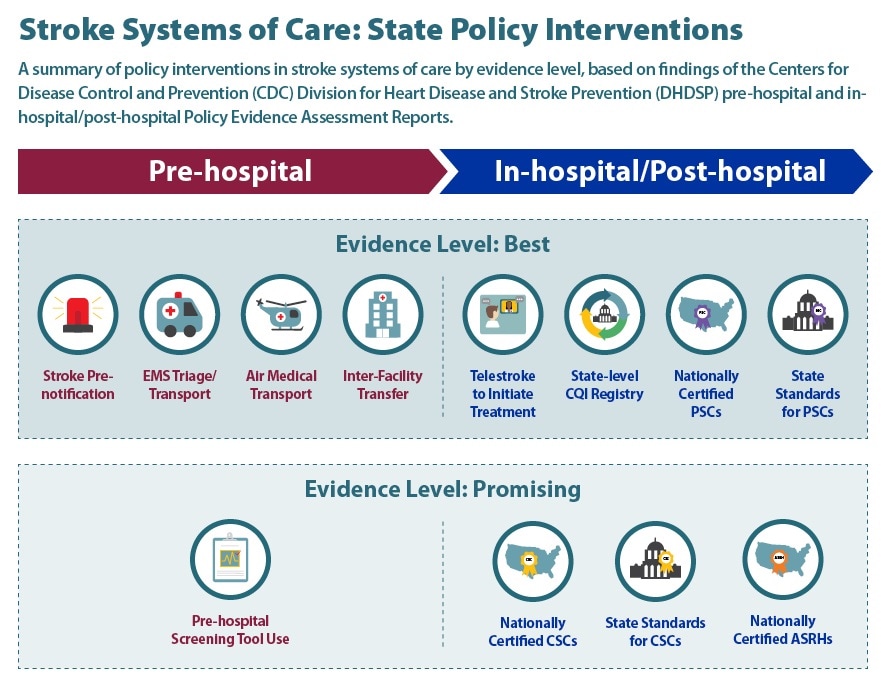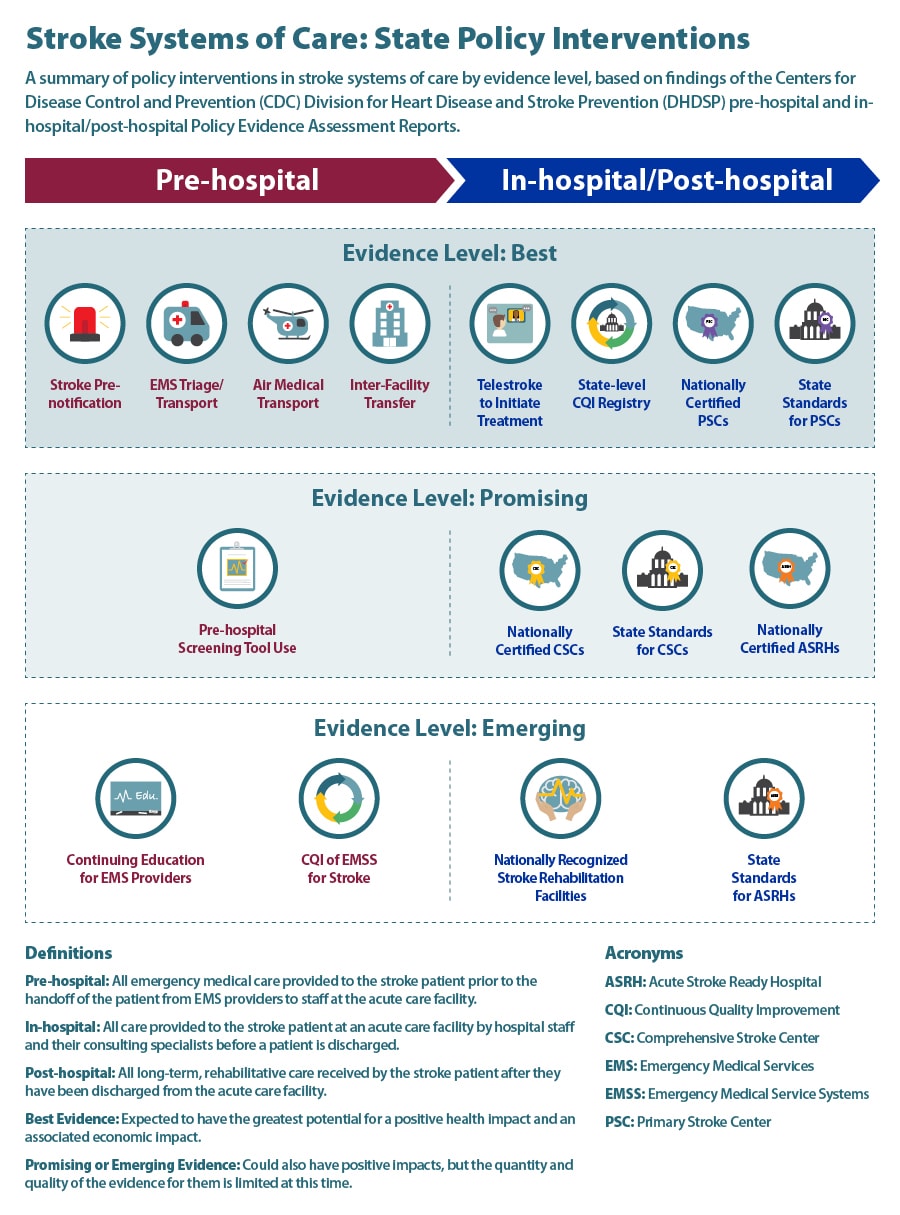At a glance
State policy interventions in stroke systems of care are based on three evidence levels—best, promising, and emerging. The Centers for Disease Control and Prevention assessed this evidence. State laws that address policy interventions with "best" evidence might have the greatest potential for positive health and economic impact.

Overview
This page summarizes state policy interventions in stroke systems of care by evidence level, based on findings of the Centers for Disease Control and Prevention (CDC) Division for Heart Disease and Stroke Prevention (DHDSP) pre-hospital and in-hospital/post-hospital Policy Evidence Assessment Reports.
Pre-hospital policy assessments were completed May 2017 and in-hospital/post-hospital assessments were completed May 2018. These Policy Evidence Assessment Reports included only those policy interventions addressed in state laws.
State laws that address the policy interventions with "best" evidence are expected to have the greatest potential for a positive health impact and an associated economic impact. Those with "promising" or "emerging" evidence could also have positive impacts, but the quantity and quality of the evidence for public health impact is limited. Many of the interventions presented here are expected to work together to improve stroke outcomes. State-level policies can address the integration of interventions.

